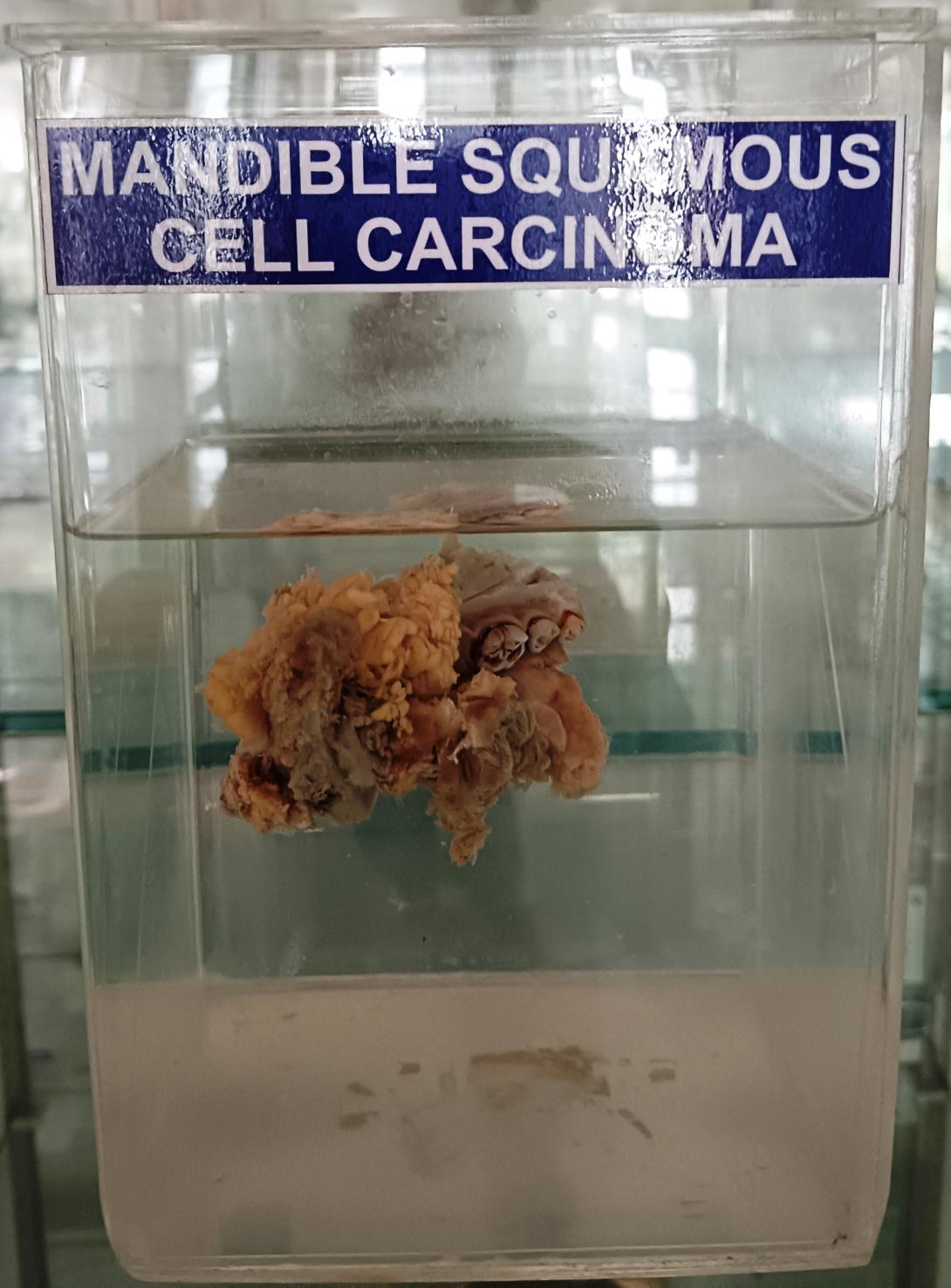Squamous cell carcinoma (SCC) is a malignant tumor that arises from the squamous cells, which are the flat, scale-like cells that make up the outer layer of the skin and mucous membranes. SCC can arise in various parts of the body, including the oral cavity, where it is known as oral squamous cell carcinoma (OSCC). When OSCC arises in the mandible, it is known as mandibular squamous cell carcinoma.
The mandible, also known as the jawbone, is the largest and strongest bone in the face. It is composed of two halves, or rami, which meet at the chin in the front of the face. The mandible has several important structures, including the teeth, the alveolar ridge (the bony ridge that supports the teeth), and the mandibular canal (which contains the inferior alveolar nerve, the artery, and the vein).
Pathologically, mandibular squamous cell carcinoma is characterized by the presence of malignant squamous cells that invade the surrounding tissues. The tumor may arise from the oral mucosa or from the bone itself. The malignant cells may form irregular nests or sheets, and they may show features of keratinization, which is the process by which the squamous cells produce a tough, protective protein called keratin.
Mandibular squamous cell carcinoma is typically associated with a range of symptoms, including pain, swelling, and difficulty chewing or speaking. The tumor may also cause paresthesia (numbness or tingling) or a loss of sensation in the lower lip or chin, due to compression or invasion of the inferior alveolar nerve.
Treatment for mandibular squamous cell carcinoma typically involves a combination of surgery, radiation therapy, and chemotherapy. The choice of treatment depends on the location, size, and stage of the tumor, as well as the overall health and preferences of the patient.

